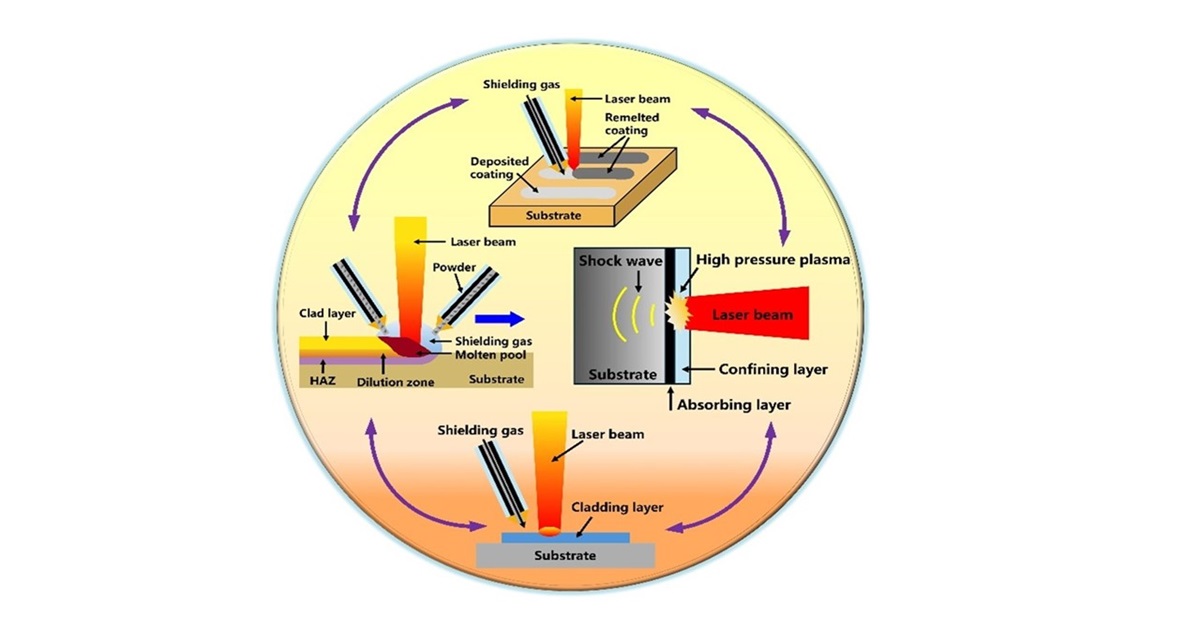Research in Laser Welding and Surface Treatment Technology
A special issue of Coatings (ISSN 2079-6412). This special issue belongs to the section "Laser Coatings".
Deadline for manuscript submissions: 25 April 2026 | Viewed by 12014

Special Issue Editors
Interests: laser cladding; welding; additive manufacturing
Interests: laser powder bed fusion; laser manufacturing; surface engineering
Special Issue Information
Dear Colleagues,
As a common representative of a new high-efficiency and high-quality welding technology, laser welding technology has numerous technical advantages, such as high quality, high efficiency, high stability, and low deformation. Laser welding technology has been widely applied in fields of aerospace, automobile manufacturing, ship engineering, and construction machinery.
Laser surface treatment technology is used to create physical and chemical changes on the surface of materials through the interaction between laser and material; it provides the surface of materials with better mechanical properties. Laser surface treatment is an effective way to improve the hardness, wear resistance, and corrosion resistance of materials.
The scope of this Special Issue will serve as a forum for papers on the following topics:
- Laser surface treatment processes including, but not limited to, additive manufacturing processes, laser cladding, laser alloying, laser quenching, etc.
- Recent developments in laser welding and surface treatment technology.
- Theoretical and experimental research, knowledge, and new ideas regarding laser welding and surface treatment.
- Computer modeling and simulation for predicting properties, performance, durability, and reliability of joints or coatings.
- Understanding the microstructural evolution of joints or coatings.
Dr. Kun Liu
Dr. Wenhui Yu
Dr. Jieren Guan
Guest Editors
Manuscript Submission Information
Manuscripts should be submitted online at www.mdpi.com by registering and logging in to this website. Once you are registered, click here to go to the submission form. Manuscripts can be submitted until the deadline. All submissions that pass pre-check are peer-reviewed. Accepted papers will be published continuously in the journal (as soon as accepted) and will be listed together on the special issue website. Research articles, review articles as well as short communications are invited. For planned papers, a title and short abstract (about 250 words) can be sent to the Editorial Office for assessment.
Submitted manuscripts should not have been published previously, nor be under consideration for publication elsewhere (except conference proceedings papers). All manuscripts are thoroughly refereed through a single-blind peer-review process. A guide for authors and other relevant information for submission of manuscripts is available on the Instructions for Authors page. Coatings is an international peer-reviewed open access monthly journal published by MDPI.
Please visit the Instructions for Authors page before submitting a manuscript. The Article Processing Charge (APC) for publication in this open access journal is 2600 CHF (Swiss Francs). Submitted papers should be well formatted and use good English. Authors may use MDPI's English editing service prior to publication or during author revisions.
Keywords
- reliability coatings
- laser welding and joining
- laser cladding coatings
- additive manufacturing
- protective corrosion coatings
Benefits of Publishing in a Special Issue
- Ease of navigation: Grouping papers by topic helps scholars navigate broad scope journals more efficiently.
- Greater discoverability: Special Issues support the reach and impact of scientific research. Articles in Special Issues are more discoverable and cited more frequently.
- Expansion of research network: Special Issues facilitate connections among authors, fostering scientific collaborations.
- External promotion: Articles in Special Issues are often promoted through the journal's social media, increasing their visibility.
- Reprint: MDPI Books provides the opportunity to republish successful Special Issues in book format, both online and in print.
Further information on MDPI's Special Issue policies can be found here.







